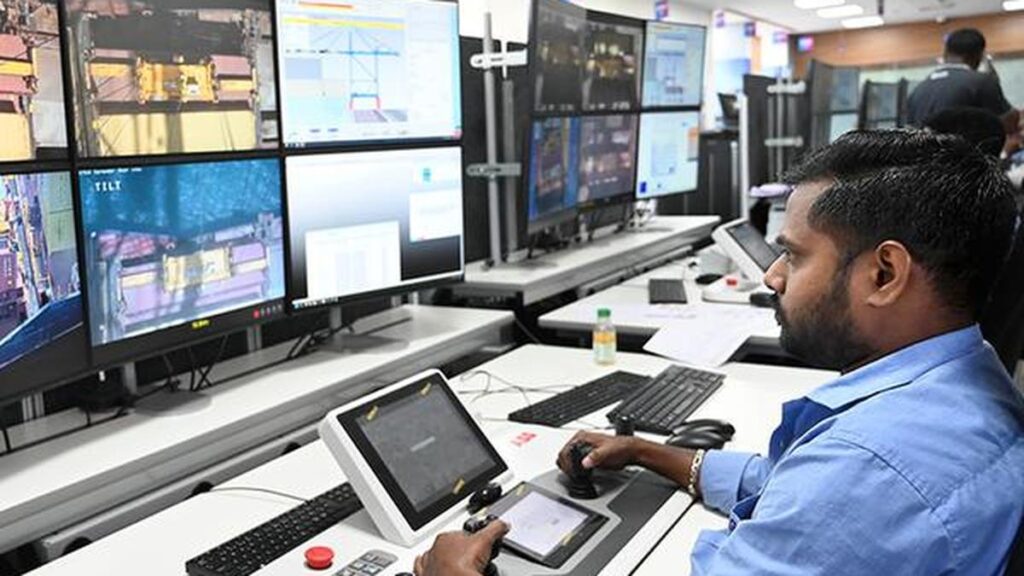970x125
The Vizhinjam seaport that was dedicated to the nation early May will likely see the kick-off of its Phase two expansion next month. Phase two, expected to be completed by 2028, targets increasing the port’s container capacity to some 4.5 million TEU a year and will add a break-bulk berth, a tanker berth and a bunkering facility on an extended 4-km-long breakwater.
970x125
Vizhinjam port, which has handled nearly 1 million TEUs after starting commercial operations in December 2024, now has an 800-m long container ship jetty capable of handling one container mother ship and two feeder vessels at a time.
Phase two will increase the length of the container berth to 2000-m long and hold three mother ships and several feeder vessels at the same time.
While Phase 1 costing a little less than ₹9,000 crore, saw the financial participation of the Kerala and the Union governments including through viability gap funding, the finance for Phase 2 costing ₹10,000 crore will be entirely raised by the Adani Ports & SEZ Ltd (APSEZ), the ports and logistics company of the Adani Group.
In 2015, the Kerala government had signed an agreement with APSEZ to develop the port and Adani has a 40-year concession to build, operate, and transfer the port, with a provision for a 20-year extension. The port commenced trial operations in July 2024, receiving its first mothership, the San Fernando.
The port has a natural deep draft of some 20 m close to the shore that requires little dredging.
During the inauguration, Prime Minister Narendra Modi had said that 75% of India’s transshipment operations were previously conducted at foreign ports, leading to significant revenue loss for the country.
And Vizhinjam will help ensure that India’s money will serve India. Port officials say the port is expected to lower logistics costs for Indian manufacturers by 30-40%, enhancing the country’s export competitiveness.
So far, all the containers handled by the port have been transshipment cargo – 60% international and 40% Indian.
The port has handled no exim cargo — containers leaving and entering Vizhinjam by road or rail after customs clearance.
Port managers say that exim cargo will grow to account for 20%, even as the second phase expansion happens. They are citing the exclusive rail line from Vizhinjam port to Balaramapuram that is being laid by the Government of Kerala and is expected to be completed by 2028. A road connecting the port and NH 66 (Mumbai- Kanyakumari) is almost ready to open, port managers say. These would help Vizhinjam’s inland connectivity through road and rail and facilitate exim cargo.
Merchant ships on global trade need periodic changes of crew.
On the East-West sea route where Vizhinjam is located, Singapore and Reunion Island are prominent crew change points.
Vizhinjam port officials are working with the government to establish an international crew change facility, leveraging the locational advantage.
A crew change facility could potentially boost local economy through hotels, restaurants and other facilities serving seafarers in transit.
Some of the largest container vessels of 400 m length and capacity of some 24,000 TEUs have docked at Vizhinjam.
Port managers recall a fully loaded Claude Girardet, another 399-m long mega container vessel, taking a detour and steaming into Vizhinjam after the crew found that some 10 containers had to be restacked for the sake of ship stability and safety. In a few hours, the containers were restacked and Girardet set sail. Vizhinjam boasts of being a hi-tech port with operators at an air-conditioned remote control station handling the cranes at the container stacks as well as shipside.
Automated handling
The port has commissioned 8 Quay Cranes that are operated remotely from a control room and 20 fully automated Cantilever Rail Mounted Gantry cranes performing container operations without the need of a human crane operator. The entire container handling operations are executed by automation systems deployed by ABB systems, who are the world leaders in container terminal automation, he said. For monitoring and controlling ship operations, an advanced Digital Twin system is implemented, that automatically collects and assimilates machine and operational events, using IoT systems, in real-time on a large 3D video wall, enabling the controllers to be proactive and respond to operational exceptions without delays.
The port has also adopted advanced sensor and radar-based technology along with artificial intelligence to effectively track, coordinate, and manage large container ships as they arrive to dock and depart after unloading.
(The writer was at Vizhinjam at the invitation of the company)
Published – August 10, 2025 08:14 am IST
970x125

